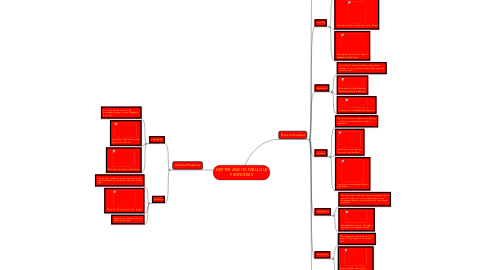
1. Physical Properties
1.1. Conductivity
1.1.1. A material's ability to allow heat to flow, or, as I prefer, temperature balance.
1.1.2. Example for high conductivity: Metal
1.1.3. Example for low conductivity: Wood
1.2. Viscosity
1.2.1. The dendency of a liquid to keep from flowing, or an abject resistence to it.
1.2.2. Examples of high viscosity: Corn syrup, honey
1.2.3. Examples for low viscosity: Vinegar, methanol, liquid nitogen
1.3. Malleability
1.3.1. The ability for a solid to be hammered without breaking, or, in my grossly oversymplified words, its overall softness.
1.3.2. Examples for high malleability: Metal, playdough, toothpaste
1.3.3. Examples for low malleability: Glass, ice
1.4. Hardness
1.4.1. The resistance oif a substance to scratching, or not being easily marred by another substance.
1.4.2. Examples for high hardness: Diamonds, stainless steel
1.4.3. Examples for low hardness: Wood, gel, pillows
1.5. Melting Point
1.5.1. The temperature at which a substances changes from a solid to a liquid, or, as I mournfully define it, that temperature where your popsicle turns to juice all over your shirt.
1.5.2. Example: Water melts at 32 degrees Fahrenheit, or 0 degrees Celcius.
1.6. Boiling Point
1.6.1. The temperature something boils. Oh, sorry, did you expect me to simplify that?
1.6.2. Example: Water boils at 212 degrees Fahrenheit, or 100 degrees Celcius.
1.7. Density
1.7.1. The ratio of a material's mass to its volume. Y'know, that ratio thing.
1.7.2. Example for high density: Concrete
1.7.3. Example for low density: Hydrogen
2. Chemical Properties
2.1. Flammability
2.1.1. A material's ability to burn in the prescence of oxygen, or its willingness to be on fire.
2.1.2. Examples of high flammability: Wood, alcohol, oils
2.1.3. Example of low flammability: Water
2.2. Reactivity
2.2.1. How readily a substance combines chemically with other substances, or how easily it does the reaction thing.
2.2.2. Examples of high reactivity: Iron, sodium
2.2.3. Example of a substance with low reactivity: Nitrogen
